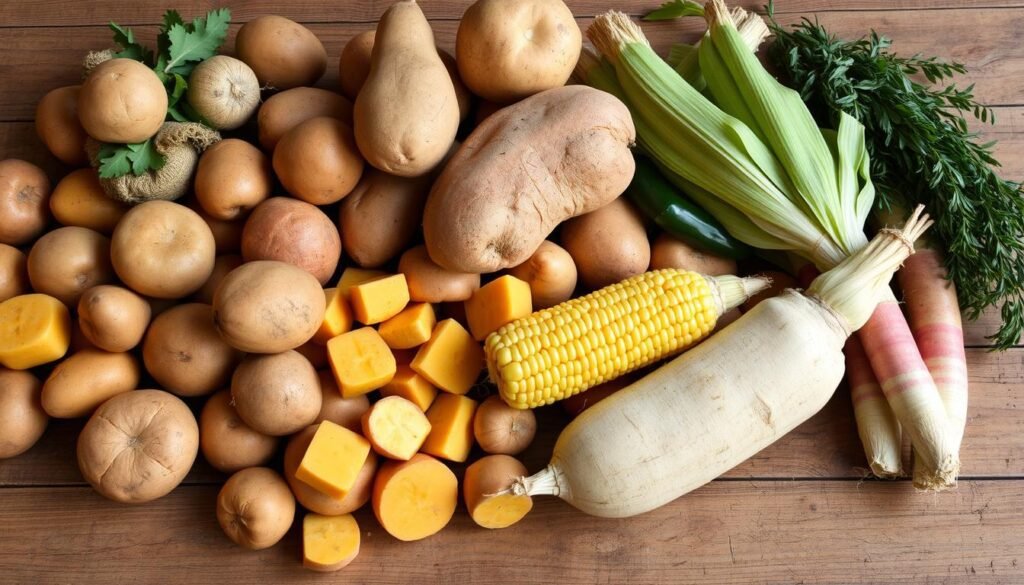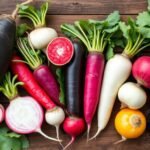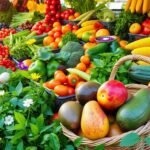d other greens are entirely beneficial. This article presents 13 vegetables that are professed to be “healthy” yet may not offer the nutrition that we take for granted.
Let us understand how the different vegetables help us in our day-to-day lives in a better way. This helps prevent any fake marketing of vegetables that might not be as beneficial as marketed claims.

To assist you further, consider these 13 so-called “healthy” vegetables to be harmful. You may, however, feel good about increasing your daily veggie intake in theory, but in reality, some veggies do more harm than good. Let’s seek the truth about these misleading vegetables.
Don’t Be Fooled by these 13 So-Called ‘Healthy’ Vegetables
These 13 so-called ‘healthy’ vegetables are as poisonous as they come veggie is believed to make a healthy addition to the diet, however, the perception is flawed, and many vegetables are not as good as they appear to be upon first glance. Some are even extremely healthy but are not marketed well enough.
There is a misconception that all root vegetables must be nutritious; potatoes, sweet potatoes, and corn are examples of popular vegetables that many feel promote health because of their appearance. But, because they contain a lot of starch, they have the potential to cause large spikes in blood sugar levels. These nutrient-depleted fake starch veggies are not comparable to the nutrition of cruciferous or green leafy vegetables.
Tomatoes, eggplants, and peppers belong to another family of fraudulent vegetables known as nightshades. However, they also contain oxalates, which are detrimental to health and may be included as part of a healthy diet. These compounds can interfere with the absorption of nutrients, causing problems.

Being aware of these nutrition fake-vegetables along with nutrition myths helps you make sensible diet decisions. In this manner, one can ascertain that the healthy vegetables that one eats are indeed quite useful.
Nutritional Value of Cruciferous Vegetables – These are not what they seem
Cruciferous vegetables like broccoli, colored cabbage, and cauliflower are quite famous foods known as superfoods. However, a closer examination reveals that their advantages for health may not be as high as asserted.
These vegetables have many vitamins, minerals, and antioxidants. But how much exactly do they have, and how much do most vegetables have? This can be very variable. It has to do with such factors as the environment where these are grown, the conditions of storage, and the extent of processing.
In addition, some of the cruciferous vegetables might not be suitable for everybody. For instance, they could interfere with thyroid functioning in some individuals. And their increased amount of fiber may cause stomach distress in sensitive individuals.
Also, be on guard with how vegetables are marketed and what claims are made about them. These claims are sometimes one-sided and do not represent the whole picture. They are often based on weak if any research.

In conclusion, in as much as cruciferous vegetables bear a lot of health benefits in them, they are not the miracle cure that most commercials sell. It is important to appreciate both the pros and the cons so as to be able to make informed decisions about whether or not to consume them.
Starchy Veggie Impostors: Breaking Down The Myth
There is a common belief that all veggies do not have high carb content and that is right. But, some starchy veggies can be a source of high carbs content. This goes against what is widely assumed about vegetables.
Let’s go through some examples of starchy vegetables that may be false accusations:
- Potatoes: Considered healthy, potatoes are actually starch and carb repeats. One potato comes up with up to 37 grams which is quite a lot of carbohydrates for a single vegetable.
- Corn: Corn is a starchy plant and not just a vegetable. A single corn ear has over thirty grams of carbohydrates, changing its place with maize in the fitted structure.
- Peas: People consider peas to be vegetables, but they belong to the legume family. They have about 25 grams of carbohydrates per cup.
Such starchy veggies may come as a shock to those who are on a vegan diet. They have more carbohydrates than the average amount. Knowledge of such vegetable nutrient analysis can be important in aiding the selection of foods as well as assist in clarifying myths associated with the plant-based diet.

Equipped with information on starchy vegetables and their respective nutrition facts belonging to vegetated correctly aids us in poster plant-dominated eating. It ensures that the food choices made are in line with the health and wellness objectives.
Nightshade Nutrition: A Case of Misunderstanding
Nightshades are commonly thought of as tomatoes, peppers, eggplants, etc., leaves. Planting health into our diet it is a little more complicated than that.
Some people think that nightshade plants could be making their arthritis worse. They hold solanine, which may aggravate arthritis or joint soreness. But, the facts do not add up. These veggies also have antioxidants and anti-inflammatory agents that could help.
Another issue is actually whether nightshades interfere with nutrient absorption. Some say that these foods contain oxalates which hinder the absorption of minerals such as calcium and iron. But, the oxalate levels in most nightshades are very low. A balanced diet is unable to cope with any absorption-related issues.
There is a lot of difference in the nutritional content of the nightshades. It depends on the type, how it’s grown, and also how it has been cooked in the first place. While there are no issues with nightshades for most these fit somewhere in a nutritious diet.
Finally, the other vital detail is the nightshade’s nutritional Value. Understanding the facts and responding to our bodies will allow us to make informed choices about these vegetables and how they are used to improve our health.
Are Vegetable Oxalates Beneficial Or Dangerous?
There is often controversy around vegetable sources of oxalates. Such compounds are found in most if not all foods of plant origin. They can indeed play several roles in our health but are often taken out of context. Today we shall be examining vegetable oxalates and seeking a better perspective of them.
Numerous vegetables, including spinach, kale, beets, and rhubarb, contain oxalates. They are necessary for plants, but they give us pause. There are those who believe they may be detrimental to humans, such as by resulting in kidney stones.
The connection between oxalates and the well-being of human beings is a very delicate one. Some people might suffer if too much oxalate is ingested. But for most people, those veggies in particular with oxalates are fit for consumption and provide several health benefits. They are full of vitamins, fiber, etc.
We need to emphasize resolving the misconceptions attached to vegetable oxalates. Not all high-oxalate veggies have to be demonized. It goes down to most of the things in life which is balance.
Yes, we should eat a range of veggies including oxalate-containing veggies. It’s about balance and respecting our needs. This way, we obtain the advantage of consuming plant-based diets without having excessive stress on oxalates.
Conclusion
It’s hard to predict the reality when fully immersed in such fetters as vegetable marketing. Many of the so-called ‘healthy’ veggies don’t have the attributes that they are advertised They need to know the facts about plant-based diets.
If we have a promotional understanding of nutrition, we will make conscientious dietary decisions There are consequences to dietary decisions and these decisions are good for our health.
So far, the subject of vegetable nutrition, namely the nutritional structure of the so-called superfood vegetables has absorbed quite a lot of our attention. From so-called superfoods – crucifers to starch, and nightshades. This knowledge will improve our vegetable shopping entirely.
Continue, let’s talk about veggie consumer education. The goal should be that there is transparency and integrity in whatever we eat. It is about health and knowledge helps enhance the quality of life.




